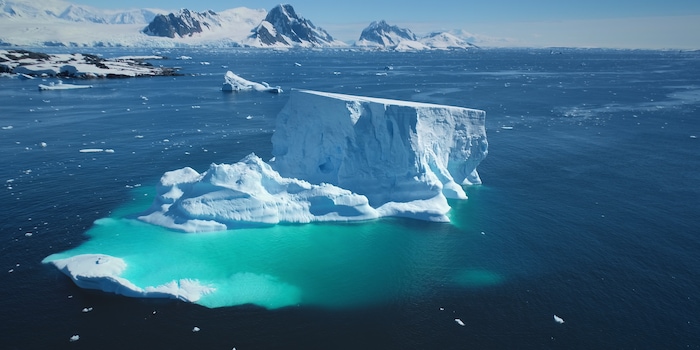
Huge icebergs leave their mark in the North Sea
Not so long ago, the sea on our doorstep was also home to huge icebergs like those drifting around the Antarctic today. They left their traces on the seabed.
Giant icebergs regularly become stranded off the island of South Georgia in the Southern Ocean, which is why these waters are known as «the graveyard of icebergs». Whether there was a counterpart in the North Sea during the last ice age is still unknown. However, it is certain that large masses of ice also drifted through the waters on our doorstep. This is evidenced by corresponding scrape marks on the seabed, which a working group led by James Kirkham from the British Antarctic Survey in Cambridge was able to prove off the Scottish coast
18,000 to 20,000 years ago, the British-Irish Ice Sheet still covered large parts of the islands, but the onset of warming caused it to slowly retreat northwards and fall apart. This created tabular icebergs with diameters of between five and ten kilometres and a thickness of 20 to 180 metres. They gradually broke up into smaller icebergs as they drifted southwards through the North Sea. Around the same time, the sea ice cover in the region also collapsed.
They scraped across the seabed in shallower areas of the Witch Ground basin off Aberdeen, where they left behind grooves reminiscent of patterns that could be drawn with a comb in soft butter. Kirkham and co discovered them when they were analysing seismic data to select locations for oil drilling platforms in the North Sea. Individual channels formed by smaller icebergs were already known from the North Sea, but the broad patterns found by the working group indicate much larger ice masses that have scraped over the ground here.
The data also shows how these large tabular icebergs disintegrated into smaller units, which then left behind the smaller and narrower channels in the sediment. For the scientists, this is a clear indication that the thick ice shelf package in the northern North Sea broke apart at that time and gradually disappeared - a process that can be observed in the Antarctic today. Several ice shelves there have disintegrated in recent years: the Larsen B ice shelf, for example, disintegrated in just one month in 2002.
A series of warmer-than-average summers had caused more and more meltwater to seep through cracks in the ice body, increasingly weakening it until it broke apart. Since then, the inland glaciers have been flowing faster into the sea, where they calve and thus contribute to sea level rise. Kirkham and co suspect a similar scenario for the British-Irish Ice Sheet after the ice shelf in the North Sea was lost: it presumably retreated by 200 to 300 metres per year at the edges at the peak of the melt.
Spectrum of Science
We are partners of Spektrum der Wissenschaft and want to make well-founded information more accessible to you. Follow Spektrum der Wissenschaft if you like the articles
Originalartikel auf Spektrum.deExperts from science and research report on the latest findings in their fields – competent, authentic and comprehensible.